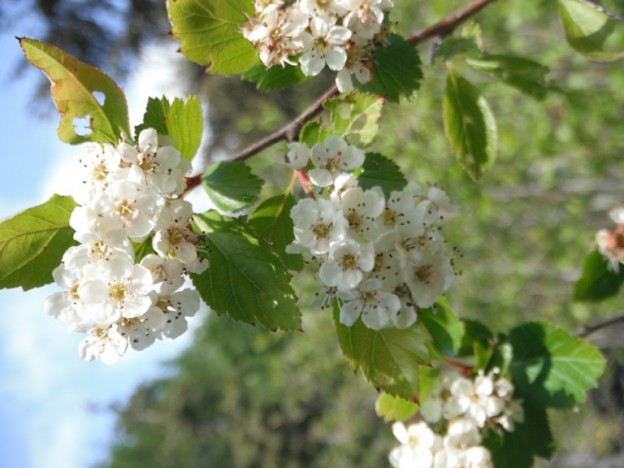or Thornberry
berries: stmuqw OR ste7múqw;
bush: stmuqwállp, or staqwéllp

The berries, though seedy, were eaten by some people, while others usually left them for the bears. Mary Thomas remembered that the old people would pick them when they were really ripe, put them into a basket, and “squeeze them and squeeze them” until all the seeds were clumped together and could be discarded. Then the pulp was spread out to dry like fruit leather. If any seeds remained, people just spat them out when they ate the fruit.
Hawthorn wood is very strong and tough. Long, straight pieces were used for bows. Old timers used to use it for a pecek, root digging stick; the wood is baked over a fire to make it even harder. The point of the digging stick was burned slightly, to make it even stronger and resistant to breakage.
Ecological Conditions
Grows well in moist areas; low to mid elevations – along rivers, wetlands and in open, deciduous forests. Does not grow in dry, cold climates.
![]()
